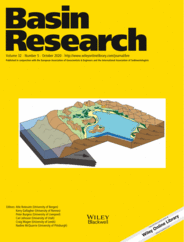
Full text loading...
 , John M. Millett1,2
, John M. Millett1,2 , John Howell1, Dougal A. Jerram3,4,5, Timothy Watton6, David Healy1
, John Howell1, Dougal A. Jerram3,4,5, Timothy Watton6, David Healy1 , Malcolm J. Hole1
, Malcolm J. Hole1 , Sverre Planke2,3
, Sverre Planke2,3
Hyaloclastites develop where lava interacts with water resulting in deposits that have a unique and often complex range of petrophysical properties. A combination of eruptive style and emplacement environment dictates the size, geometry and distribution of different hyaloclastite facies and their associated primary physical properties such as porosity, permeability and velocity. To date, links between the 3D facies variability within these systems and their petrophysical properties remain poorly understood. Hjörleifshöfði in southern Iceland presents an exceptional outcrop exposure of an emergent hyaloclastite sequence >1 km wide by >200 m high and enables an investigation of the distribution of the hyaloclastite deposits at seismic scale. Within this study we present a photogrammetry‐based 3D model from part of this recent hyaloclastite delta and incorporate previous work by Watton et al. (Journal of Volcanology and Geothermal Research, 2013, 250, 19) to undertake detailed facies interpretation and quantification. Laboratory petrophysical analyses were performed on 34 core plugs cut from key field facies samples, including P‐ and S‐wave velocity, density, porosity and permeability at both ambient and confining pressure. Integration of the 3D model with the petrophysical data has enabled the production of pseudo‐wireline logs and property distribution maps which demonstrate the variability of physical properties within hyaloclastite sequences at outcrop to seismic scale. Through comparison of our data with examples of older buried hyaloclastite sequences we demonstrate that the wide‐ranging properties of young hyaloclastites become highly uniform in older sequences making their identification by remote geophysical methods for similar facies variations more challenging. Our study provides an improved understanding of the petrophysical property distribution within hyaloclastite sequences and forms a valuable step towards improving the understanding of similar subsurface sequences and their implications for imaging and fluid flow.
,We present a photogrammetry‐based 3D reconstruction of Hjörleifshöfði in southern Iceland which provides an exceptional outcrop exposure of an emergent hyaloclastite sequence. By incorporating detailed facies interpretations and laboratory petrophysical analyses into the model, we have produced pseudo‐wireline logs and property distribution maps to demonstrate the variability of physical properties at seismic scale. Our study provides an improved understanding of the petrophysical property distribution within hyaloclastite sequences and forms a valuable step towards improving the understanding of similar subsurface sequences and their implications for imaging and fluid flow.

Article metrics loading...

Full text loading...
References


Data & Media loading...

